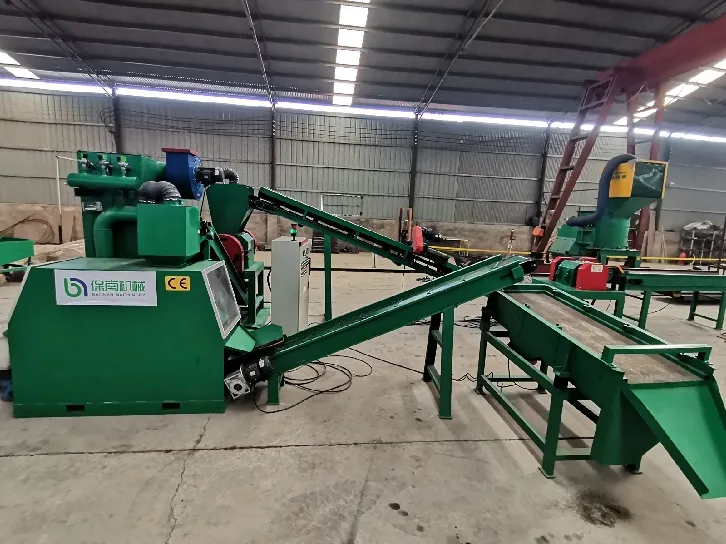
9 月 . 28, 2024 02:50 Back to list
How Does a Granulator Work?
A granulator is a crucial piece of equipment used in various industries, including pharmaceuticals, food processing, plastics, and manufacturing. Its primary function is to break down large particles or materials into smaller, more manageable granules. This process enhances the flowability of powders, improves uniformity, and facilitates further processing, such as mixing, packing, or tableting. Understanding how a granulator works is essential for optimizing production processes and ensuring product quality.
The operation of a granulator typically involves three main steps size reduction, granulation, and drying
. Each step plays a vital role in shaping the final product's properties.Size Reduction
The first stage of the granulation process is size reduction, where raw materials are transformed into smaller particles. This is accomplished using mechanical force, often through the application of knives or blades that cut and shear the material. The size reduction process is crucial because it increases the surface area of the particles, which enhances the efficiency of subsequent processes. Various types of size reduction equipment can be used, including hammer mills, shredders, and crushers, and the choice depends on the material's characteristics and the desired granule size.
Granulation
Once the materials have been sufficiently reduced in size, the next step is granulation, where these smaller particles are agglomerated to form granules of a specific size. There are two primary methods of granulation dry and wet granulation.

In dry granulation, the powder is compacted under high pressure into sheets or flakes, which are then broken down into granules. This method is efficient for materials that are sensitive to moisture or heat.
In contrast, wet granulation involves the addition of a binding agent, typically in the form of a liquid solution. The mixture of powder and liquid is then agitated, causing the particles to stick together and form larger granules. Once the desired granule size is achieved, the wet mass is dried to remove excess moisture, leaving behind dry granules. This method is particularly effective for improving the flowability and compressibility of powders, making it widely used in pharmaceutical applications.
Drying
The final stage in the granulation process is drying. After granulation, the granules often contain residual moisture, which can affect their stability and shelf-life. Various drying techniques can be employed, such as fluidized bed drying, tray drying, or spray drying, depending on the material's properties and production requirements. Effective drying ensures that the granules achieve the right moisture content, which is critical for further processing or storage.
Conclusion
In summary, a granulator works by reducing the size of raw materials, then agglomerating them into granules, and finally drying them to achieve the desired properties. Granulation is a vital process across multiple industries, improving product flowability and consistency, which are essential for manufacturing quality products. Understanding the mechanics and techniques involved in granulation can help manufacturers enhance their production efficiency and product quality, making granulators indispensable in modern industrial processes.
Latest news
Unveiling the Power of Eddy Current Separator
NewsSep.25,2024
Transform Your Home Recyclin:home metal shredder
NewsSep.25,2024
The Future of Waste Management with Recycling Line Picker
NewsSep.25,2024
The Benefits of a Metal Recycling Plant
NewsSep.25,2024
Revolutionize Material Separation with Onwang Technology
NewsSep.25,2024
Innovative Waste Management: Unveiling the MSW Sorting Plant
NewsSep.25,2024